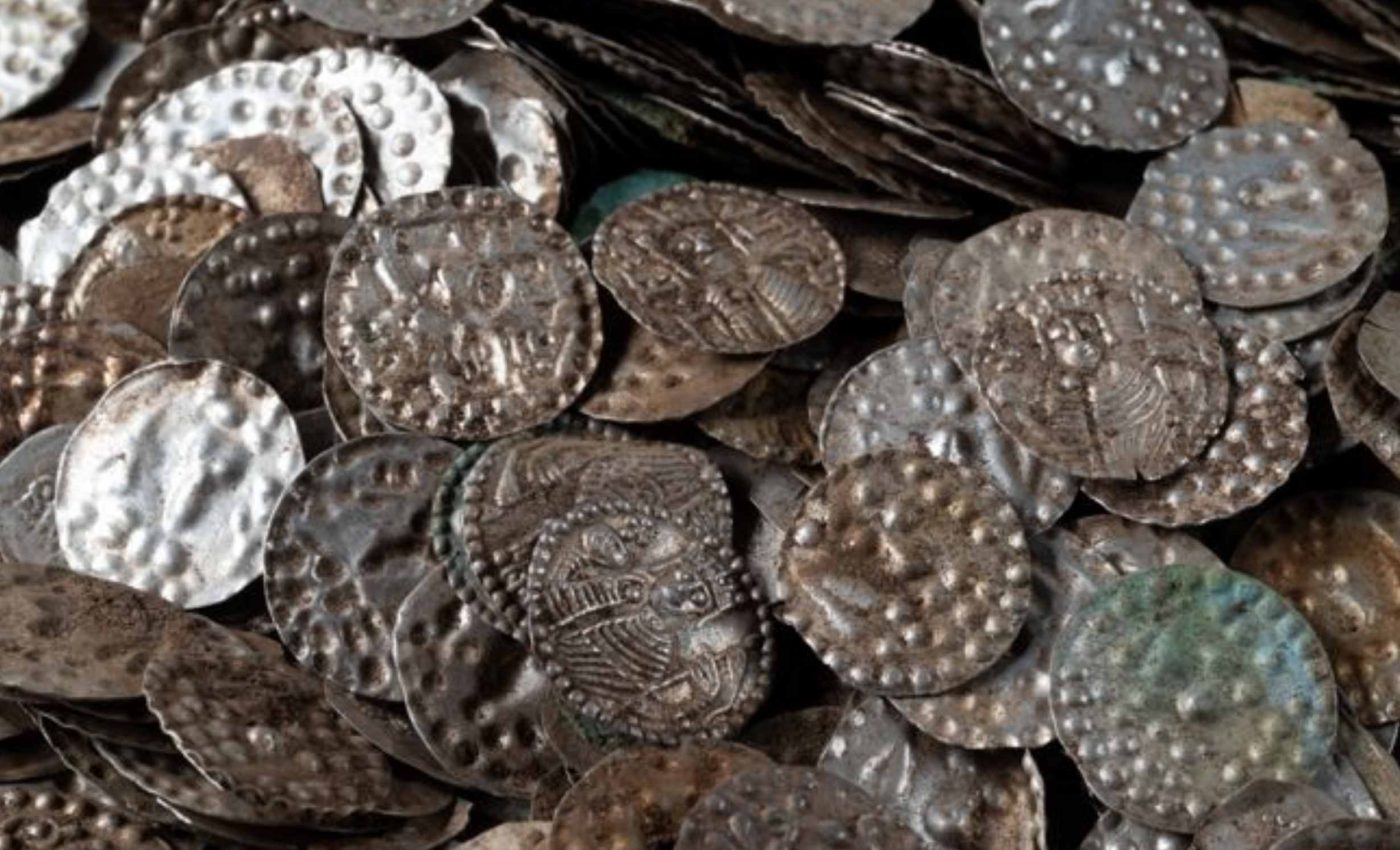
Man finds medieval treasure trove containing more than 20,000 silver coins
A man digging near his summer house outside Stockholm uncovered a hoard, a hidden deposit buried for safekeeping. Early checks suggest up to 20,000 silver coins, weighing about 13 pounds.
The silver lay inside a copper cauldron with rings, pendants, and beads. Archaeologists are now documenting the site and the objects.
What was found and why it matters
Sofia Andersson, an antiquarian, a specialist in old objects and records, at the County Administrative Board of Stockholm is coordinating the early review. Her team is cataloging coins and jewelry before deeper analysis begins.
“This is probably one of the largest silver treasures from the early Middle Ages that has been found in Sweden. We don’t yet know exactly how many coins there are, but I think it could be upwards of twenty thousand,” said Sofia Andersson, antiquarian at the County Administrative Board in Stockholm.
Most pieces appear to date to the late 1100s. The mix of coinage and personal items hints at wealth stored quickly and left behind.
Coins that speak for power and belief
Several pieces are bishop coins, coins issued for a bishop rather than a king. They often carry church symbols that signal authority in everyday trade.
Some show a bishop holding a crozier, a hooked staff used by bishops. That image marks how church offices could mint and guarantee currency alongside royal mints.
These details are a gift to numismatics. Money types, inscriptions, and symbols help date layers and track who controlled mints.
Coins from King Knut Eriksson’s reign are documented in museum collections. Pieces from this era are small silver pennies that changed hands across markets and parishes.
Life and trade in medieval Sweden
The late 12th century was a time of shifting alliances and growing trade along the Baltic. Stockholm and nearby settlements were beginning to emerge as hubs linking inland farms to seafaring merchants from Denmark and the Hanseatic ports.
Silver coins like those in the hoard likely circulated through markets that handled everything from furs and iron to imported glassware. Wealth was often stored as metal rather than currency in early medieval Scandinavia.
People measured value by weight as much as by royal stamp. The mixture of jewelry and coins in this hoard hints at a household saving for security, perhaps hidden during unrest or war and never retrieved.
The law behind lucky finds
Sweden’s Cultural Environment Act, the national law protecting ancient sites and finds, requires reporting such discoveries to authorities. The county board is the public responsible for cultural heritage work in each county.
If the state decides to redeem, take into state ownership for payment, a treasure, the finder is compensated. Rules on redemption and compensation are handled by the Swedish National Heritage Board.
People who uncover old objects are told to contact the County Administrative Board at once. Investigators can then secure the site and prevent damage or theft.
The process balances private luck with public interest. The aim is to keep knowledge intact while treating the finder fairly.
Preserving Sweden’s buried past
Once the site work ends, the focus shifts to keeping the discovery intact for study and public access.
Every object will likely move to a regional or national museum, where specialists can stabilize fragile metals and catalog each item for long-term storage.
The Swedish History Museum and its regional partners often handle major treasure finds. Their experts use micro-CT scanning to see beneath corrosion layers and document hidden details before cleaning begins.
From backyard to lab bench
After basic stabilization, conservators will remove soil and corrosion. A provenance, the recorded origin and history of an object, will be built for each coin as cataloging proceeds.
Researchers will identify mints, rulers, and workshop marks. Differences in engraving and metal mix can separate official issues from imitations.
Cleaning is deliberately slow to protect thin silver surfaces. If fragments remain from the copper cauldron, a large cooking pot used in homes, they may show how the container was made and used.
The team will photograph both sides of each coin. They will also log weights and diameters to spot clusters that track to single minting campaigns.
What we may learn next
If the hoard is complete, it preserves a snapshot of purchasing power in one moment. It also shows the reach of church and crown in everyday exchange.
Bishop coin types can map church influence across dioceses. Royal types can reveal how often rulers updated designs to assert control.
Imported coins, if present, could trace trade routes. Small stylistic quirks can link Stockholm finds to workshops far from the capital.
Finally, the hoard may refine the timeline for Sweden’s late 12th century. Monetary evidence often tightens dates when documents are silent.
Imege credits: Länsstyrelsen Stockholm/Richard Grönwall, Uppdrag arkeologi.
—–
Like what you read? Subscribe to our newsletter for engaging articles, exclusive content, and the latest updates.
Check us out on EarthSnap, a free app brought to you by Eric Ralls and Earth.com.
—–













